Home to 30 percent of the country’s citrus production, California is synonymous with orange, lemon and grapefruit trees. Given that the state’s citrus industry generates nearly one billion dollars in economic activity each year, it is easy to understand why oranges, lemons, grapefruits and tangerines come to mind whenever you think of The Golden State.
While primarily grown by the commercial agricultural industry, citrus trees are also popular among amateur gardeners and landowners. Some maintain the trees for their delicious fruit, while other use citrus plants as ornamentals. Still others take advantage of their dense growth habit and large thorns, by using them to create boundaries.
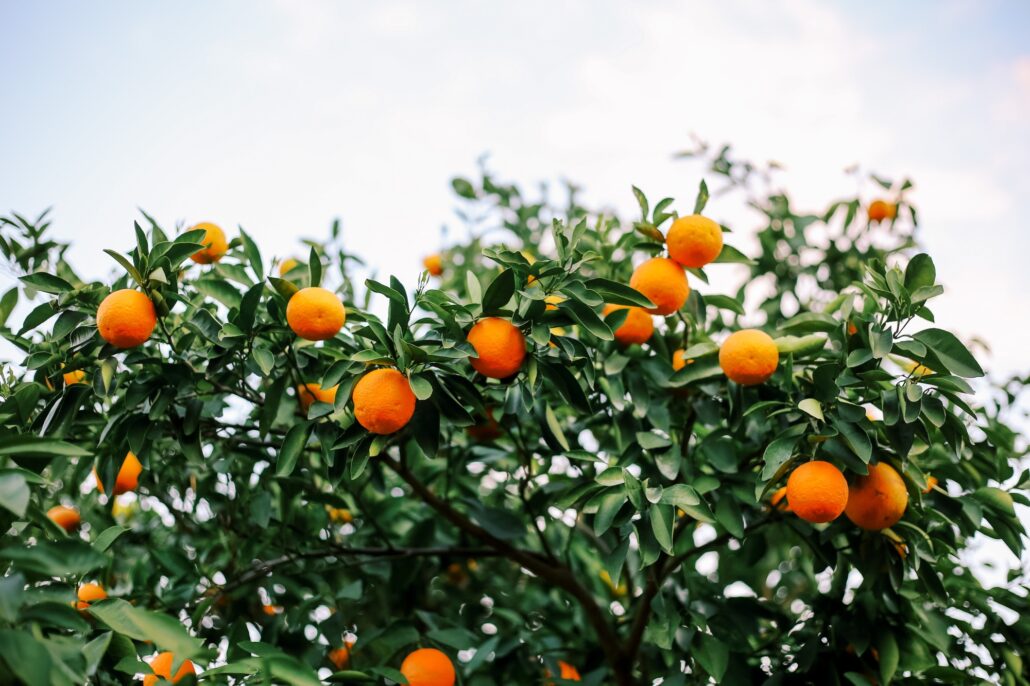
Citrus Tree Basics
Most citrus trees are modest in size, reaching heights between about 10 and 30 feet. However, there is some diversity within the group – a few forms remain shrub-like, while the mature height of others exceeds 50 feet.
Citrus trees are evergreen, and only discard their leaves when stressed by drought, pests or other harmful stimuli. Citrus trees grow best when provided with direct sunshine and moist, well-drained soils. However, supplemental irrigation has allowed farmers to grow the crop in areas without sufficient rainfall. The trees usually survive moderate water deprivation, but the fruit crop is likely to suffer in such circumstances.
Most citrus trees are hardy to about 29 degrees Fahrenheit, although they thrive best in climates that remain above freezing. It is often necessary to take steps to protect citrus trees from low temperatures, such as wrapping the trees in cardboard or other items that insulate the trees from the low temperatures.
Low temperatures can harm citrus trees as well as the fruit itself; harsh winters drastically reduce the commercial yield. Different varieties exhibit varying tolerances to low temperatures, so growers at the northern end of the citrus belt often choose to work with the most cold-hardy varieties, such as mandarin oranges (Citrussinensis) and kumquats (Citrus japonica).
Citrus are also grown indoors in cooler climates, by homeowners seeking to add fresh oranges or lemons to their diet.

Citrus Flowers and Fruit
Citrus trees bloom in the spring, with fruit beginning to develop shortly thereafter. By the fall or winter, most fruit have matured, and they become ready for harvest. However, some of the largest fruits, such as grapefruits, may take over a year to mature.
Most species have fragrant flowers with five petals. Pollination occurs with the help of insects, although the wind plays a small role in the process. After pollination, the flowers morph into relatively large, juicy berries, enclosed in a thick rind (technically, citrus fruits are called hesperidiums).
The rinds of most citrus fruits contain essential oils, which are harvested and used in a variety of commercial applications, such as the manufacture of cleaning products and fragrances. However, as they are bitter, leathery and inedible, the rinds of most citrus fruits are rarely eaten by humans. Exceptions do exist though: The kumquat, for example, has a relatively thin rind, and many people eat the entire fruit.
Citrus fruits contain a generous quantity of citric-acid-rich juice, which is often extracted and prepared as a beverage.
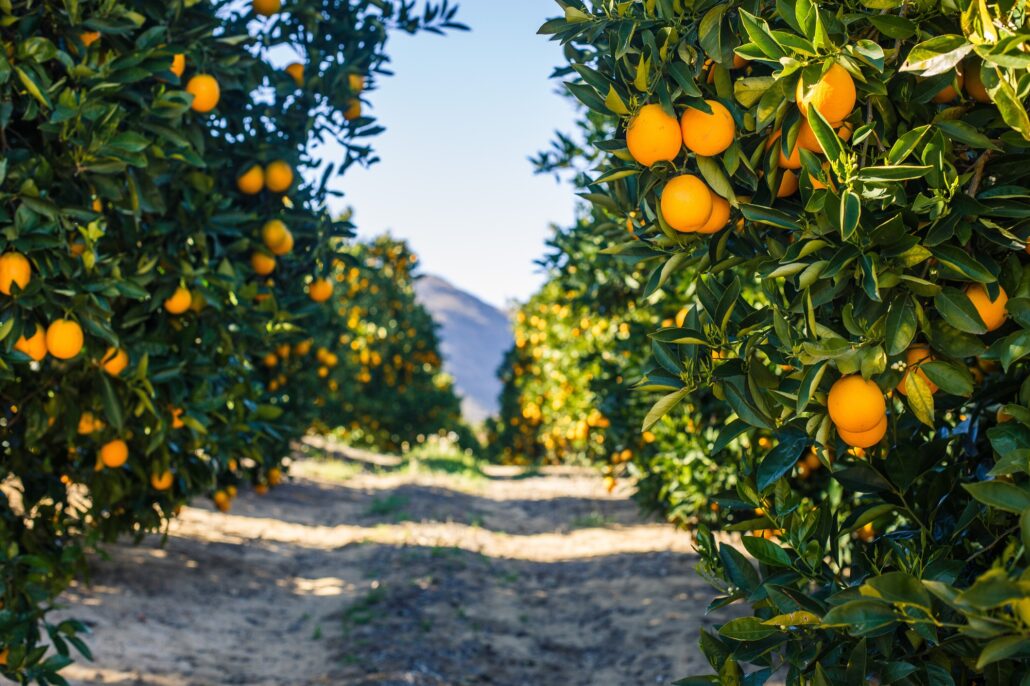
Diversity within the Genus
While it is clear that the genus Citrus contains a number of familiar trees, scientists disagree on the exact composition of the clade. Hybridization – both natural and artificial – is rampant among the group, which further complicates the classification of the genus.
Four naturally occurring species – the citron (Citrus medica), pummelo (Citrus maxima), Key lime (Citrus aurantifolia) and mandarin (Citrus reticulata) – are likely the ancestral species that have given rise to all living species of citrus. Many of the most common commercial species have been produced via the artificial hybridization of these species and their derivatives.
For example, most commercially important oranges are the result of crossing pummelos with mandarins. Individual varieties are then created by capitalizing on random mutations and establishing clonal lines. This is best illustrated by the fact that blood oranges, navel oranges and Valencia oranges are all considered the same species – the sweet orange (Citrus sinensis). Similarly, the numerous grapefruit varieties are all hybrids between the sweet orange and the pummelo.
In addition to Citrus species, several other closely related plants are important to citrus cultivation. For example, the trifoliate orange (Poncirus trifoliata) is closely related to the other citrus trees, but is currently placed in a separate genus. Also called Chinese bitter oranges, trifoliate oranges are generally regarded as unpalatable, although they can be used to make preserves. However, growers use this species as a rootstock onto which they graft other, more palatable, Citrus species.
Part of the reason this plant makes such an excellent rootstock relates to its cold hardiness. This allows growers to produce citrus trees in areas that would normally be too cool for seed-grown stock. Generally, cultivators graft a branch from the desired citrus species or cultivar onto the rootstock of a hardy, disease-resistant variety. This allows the grower to produce a desired fruit, while drawing benefits from a robust rootstock.
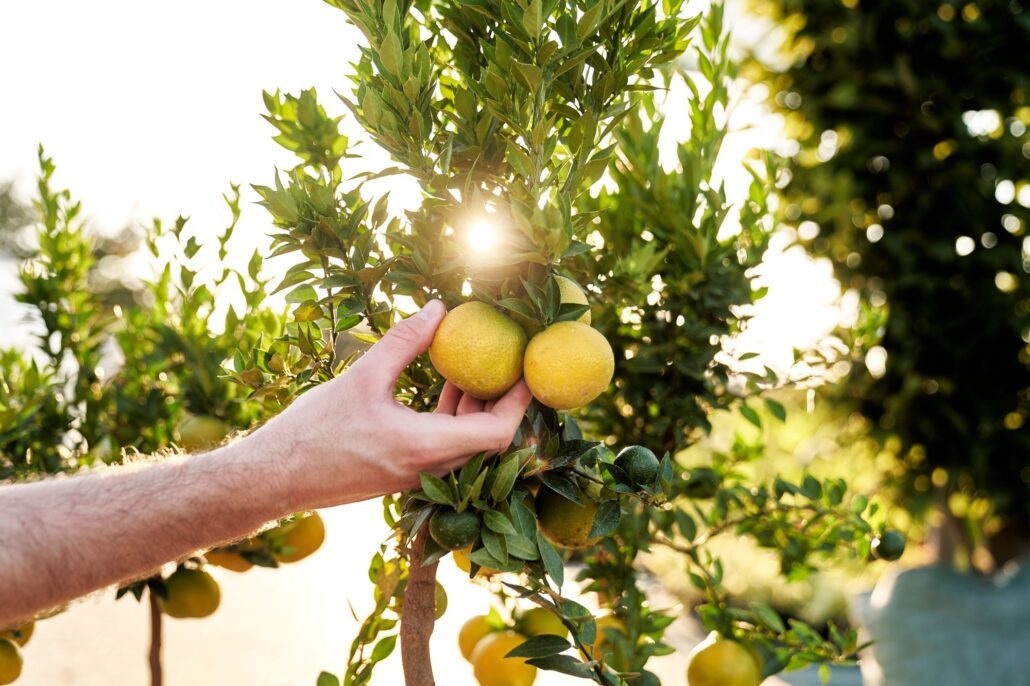
Growing Your Own Citrus Trees
While spring is the ideal time to plant citrus trees, those living within the appropriate climate zone can plant them at any time of the year.
Citrus trees can be grown from seed, but the results rarely match that of trees produced from cuttings. Unlike seeds, which yield an offspring with a blended set of genes, cuttings produce clones of the parent tree. Accordingly, most commercially available citrus trees are produced in this manner.
It is usually easy to find both bare-root specimens, as well as larger, container-grown trees. Most orchards obtain bare-root stock in the winter, but container-grown stock is often available year round. Bare root trees are less expensive than container-grown trees, but they are also smaller than their container-grown counterparts are.
Regardless of which type of tree you select, the planting protocol is essentially the same, once you account for the size difference. You must dig a proper planting hole twice as wide as the root spread and no deeper than the height of the root ball or trunk flair to give your tree the best chance to thrive. Selectively prune the roots to remove any damaged strands or circling roots (common among container-grown trees) present.
While you can successfully grow citrus trees in as little as 18 inches of soil, 36-inch-deep soil is preferable. The soil must have excellent drainage, but you must be sure that it remains moderately damp and never dries out completely. Areas with impermeable soil layers less than 36 inches deep may experience drainage problems; in such areas, you should perforate the hardpan layer in several places to allow water to drain satisfactorily.
After tending to the roots and placing the tree in the hole, refill it with the soil that was removed beforehand. Gently pack the soil into place, but avoid over-compaction.Water the soil thoroughly after filling in the hole, which will help prevent the roots from drying out and help the soil to settle. Try to keep the water away from the trunk as much as is possible and avoid oversaturating the soil, as this can reduce the amount of oxygen present.
Citrus trees rarely need structural pruning in the first few years of their lives. But once they have become thoroughly established, you can prune them each spring to remove dead or dying branches. This will allow better light penetration to the healthy leaves and flowers, and help the tree use its resources more efficiently. Because water sprouts and suckers are rarely as productive as typical branches are, most growers remove them each spring.
Be aware that pruning often triggers citrus trees to produce new foliage. This new growth is likely to die if exposed to cold temperatures, so it is generally not advisable to prune citrus trees in the autumn.
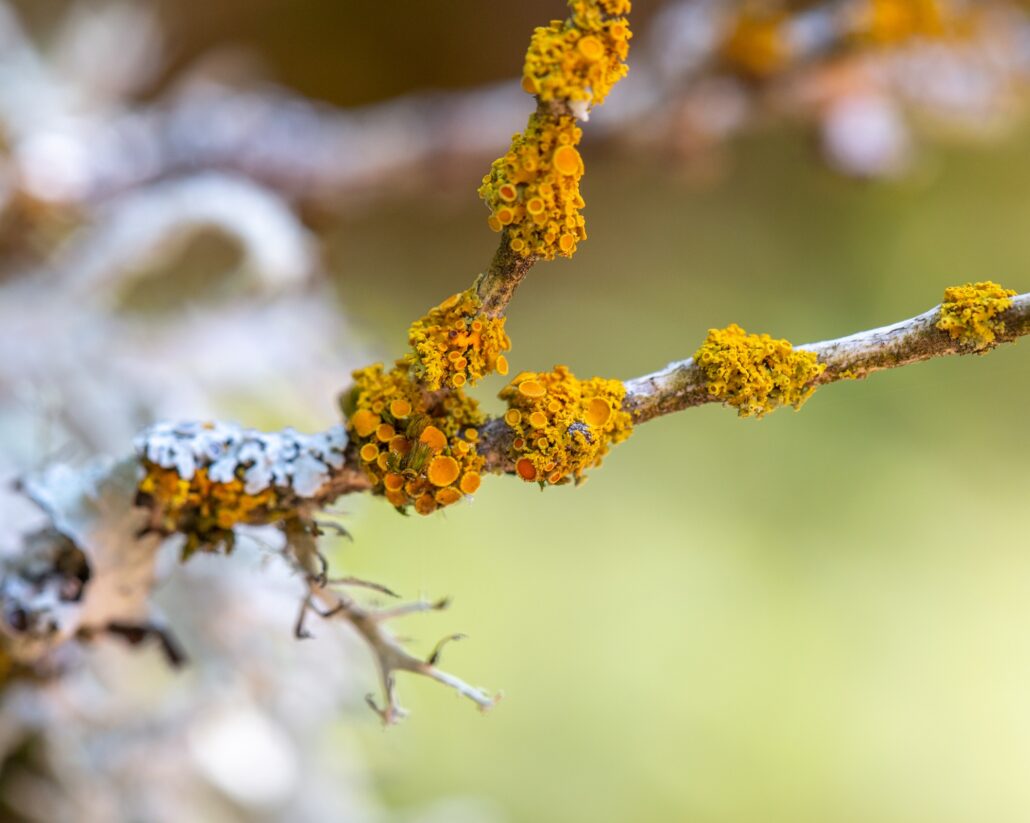
Bacterial and Fungal Threats to Citrus Trees
A variety of fungal and bacterial agents cause rots and molds in citrus plants. Some of the most common causal agents include Phytophthora spp., Alternariacitri, Colletotrichumgloeosporioides and Botrytis cinerea. Brown rot (caused by Phytophthora spp.) is one of the most common rots to affect orchard trees.
One particularly dangerous fungus — Guignardia citricarpa – causes a disease called citrus black spot. First discovered in Australia in the late 19th century, it soon spread to South Africa and, eventually parts of Asia and the Americas. The disease – for which there is no cure – was discovered in Florida in 2010. Although the disease has not yet been documented in California, authorities are encouraging vigilance by growers and homeowners, as it is likely to arrive eventually.
Another potentially destructive exotic pathogen, Xanthomonas axonopodis, has yet to be discovered in California, although authorities fear that its arrival is imminent. The disease is thought to be native to southeastern Asia, and it is now established in Brazil and Florida. This particular bacterium causes a disease called citrus canker, which leads to premature leaf drop and discoloration of the fruit.
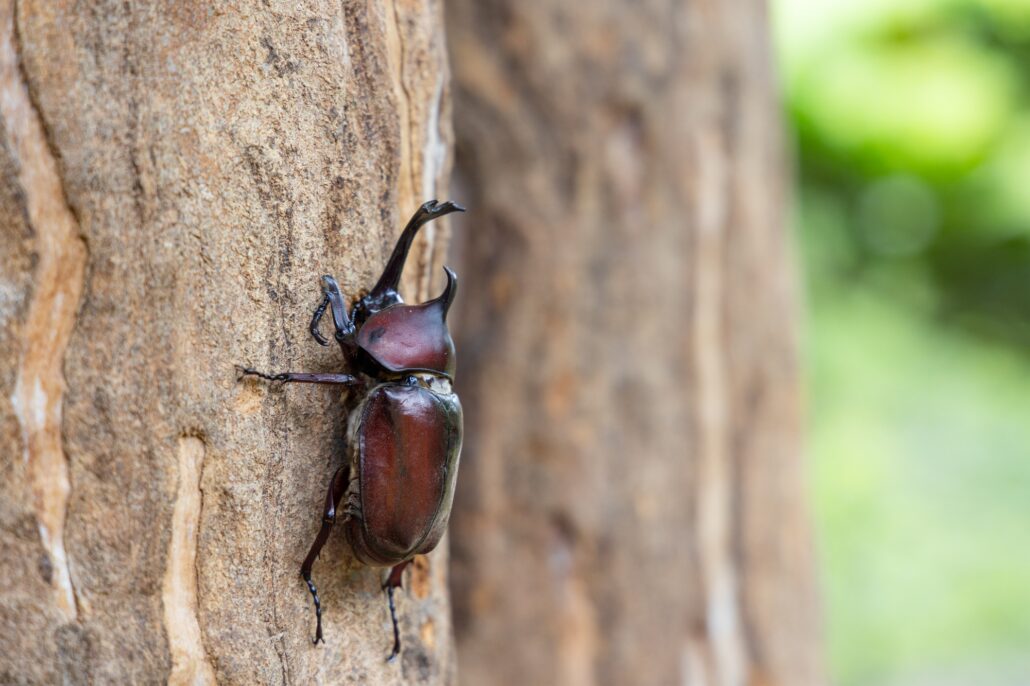
Insect Pests of Citrus Trees
Several insects also attack citrus trees. Whiteflies, scale insects, leafminers and aphids frequently feed on the trees, as do a variety of caterpillar larvae, snails and grasshoppers. Most such attacks are relatively minor and young or otherwise stressed trees are at greatest risk. Nevertheless, a few insects represent a serious threat to citrus trees.
Perhaps the greatest threat to citrus trees is caused by a small insect known as the Asian citrus psyllid (Diaphorina citri). Though native to south Asia, the insect has colonized a number of areas outside its natural range, including portions of the Middle East, Central America, Mexico and the United States.
The insect was first discovered on U.S. shores in June of 1998, when the insect was found inhabiting a few citrus trees on the east coast of Florida. Over the following years, the insect spread to other citrus-producing regions, including Arizona, Texas, Georgia, South Carolina and Louisiana. In 2008, researchers discovered Asian citrus psyllids living in some California citrus trees. Currently, the insects can be found throughout most of the southern half of the state.
At only a little over one-tenth of an inch in length, the brown-winged, red-eyed adults can be difficult to see well with the naked eye, so use a magnifying glass when looking for the problematic bugs.
Eggs (when noticed), are small, yellow and generally deposited on fresh leaves. The immature nymphs, who are even smaller than the tiny adults, are yellow rather than brown, but, like the adults, they also have red eyes. Nymphs bear no wings and produce curly, bulb-tipped tubules, which allow the nymphs to rid their bodies of waste products. Only Asian citrus psyllids bear these types of tubules, therefore their presence provides a positive identification.
The psyllids damage citrus trees by feeding on the trees’ leaves and stems, but the true danger represented by the bugs comes in the form of a deadly bacteria (Ca. Liberibacter sp.) they often carry. These bacteria – which stay with infected insects for the rest of their lives – lead to a disease called Huanglongbing, or citrus greening disease.
The disease may fail to produce symptoms for many months following infection. Yellow leaves, veins and stems often appear as some of the first visible symptoms; shortly afterward, the fruit begin to show signs of the disease, as they often turn green, take on unusual shapes or drop prematurely. Twig dieback, root death and a general decline in vigor are also possible symptoms of the disease. The fruit of infected trees is very bitter and without commercial value.
Huanglongbing is nearly 100 percent fatal for the trees that it infects, and currently, there is no cure. The best option available to famers is typically removal of the infected tree. Additionally, authorities usually enact quarantines whenever new colonies are discovered.
However, some scientists are working on producing citrus trees that are resistant to some of the most common diseases. One strategy has centered around genetically engineering citrus trees in the hopes of creating resistant trees. For example, researchers with the Texas A&M Agrilife Research and Extension Center have obtained promising results by introducing genes from spinach plants into citrus trees.
Nevertheless, until an effective cure is developed or a resistant strain of citrus trees becomes widely available, prevention is key. Only purchase citrus trees from licensed nurseries and avoid moving citrus trees from one place to the next. Inspect your trees every month – if signs of the insect or Huanglongbing are discovered contact the California Department of Food and Agriculture (1-800-491-1899) immediately.
